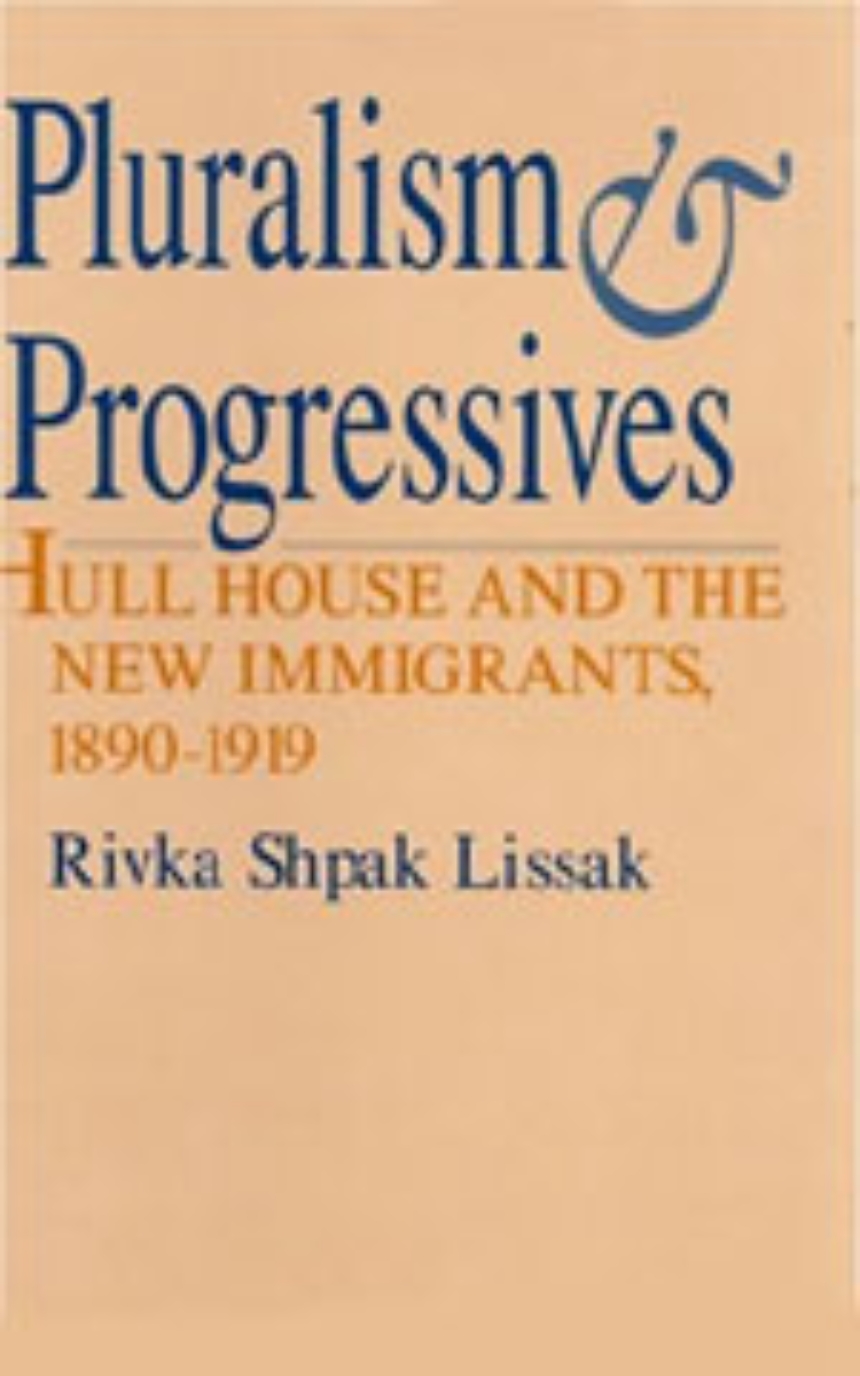Pluralism and Progressives
Hull House and the New Immigrants, 1890-1919
The settlement house movement, launched at the end of the nineteenth century by men and women of the upper middle class, began as an attempt to understand and improve the social conditions of the working class. It gradually came to focus on the "new immigrants"—mainly Italians, Slavs, Greeks, and Jews—who figured so prominently in this changing working class. Hull House, one of the first and best-known settlement houses in the United States, was founded in September 1889 on Chicago’s West Side by Jane Addams and Ellen G. Starr. In a major new study of this famous institution and its place in the movement, Rivka Shpak Lissak reassesses the impact of Hull House on the nationwide debate over the place of immigrants in American society.
Table of Contents
Acknowledgments
Definition of Terms
Introduction: The Myth of Jane Addams and Hull House
Part One: Liberal Progressives and Assimilation
1. The Hull House Idea of Community
2. The Hull House Concept of Immigrant Assimilation
3. The Role of the Settlement in the Assimilation of "New Immigrants"
4. Hull House, the Education of Immigrant Children, and Ethnic Studies
5. Leadership, Cultural Brokerage, and "Control through Alliance"
Part Two: Hull House and the "Immigrant Colonies"
6. Hull House and the Immigrant Subcommunities
7. Hull House and Its "New Immigrant" Clientele
8. Hull House and Immigrant Leadership: Patterns of Adjustment to the American Environment
Part Three: Liberal Progressives and American Nationalism and Culture
9. Internationalism and Universal Brotherhood
10. The Contribution Idea and the Hull House Concept of American Civilization
11. The Hull House Concept of American Nationalism and Culture in the Spectrum of Contemporary Views
Afterword: Myth and Reality
Notes
Select Bibliography
Index
Definition of Terms
Introduction: The Myth of Jane Addams and Hull House
Part One: Liberal Progressives and Assimilation
1. The Hull House Idea of Community
2. The Hull House Concept of Immigrant Assimilation
3. The Role of the Settlement in the Assimilation of "New Immigrants"
4. Hull House, the Education of Immigrant Children, and Ethnic Studies
5. Leadership, Cultural Brokerage, and "Control through Alliance"
Part Two: Hull House and the "Immigrant Colonies"
6. Hull House and the Immigrant Subcommunities
7. Hull House and Its "New Immigrant" Clientele
8. Hull House and Immigrant Leadership: Patterns of Adjustment to the American Environment
Part Three: Liberal Progressives and American Nationalism and Culture
9. Internationalism and Universal Brotherhood
10. The Contribution Idea and the Hull House Concept of American Civilization
11. The Hull House Concept of American Nationalism and Culture in the Spectrum of Contemporary Views
Afterword: Myth and Reality
Notes
Select Bibliography
Index
